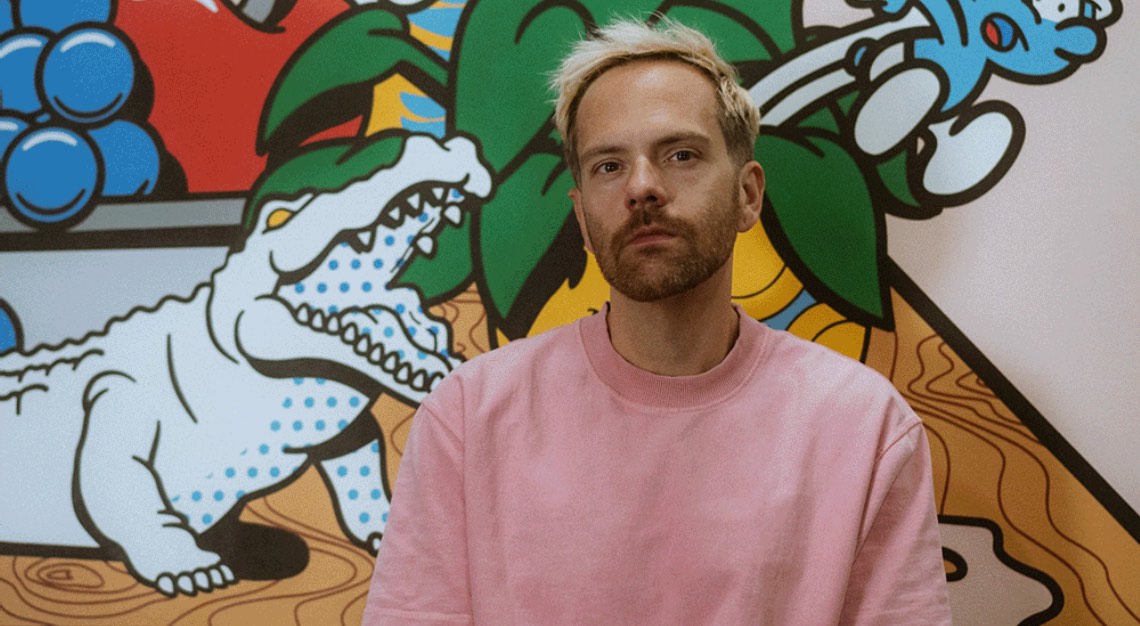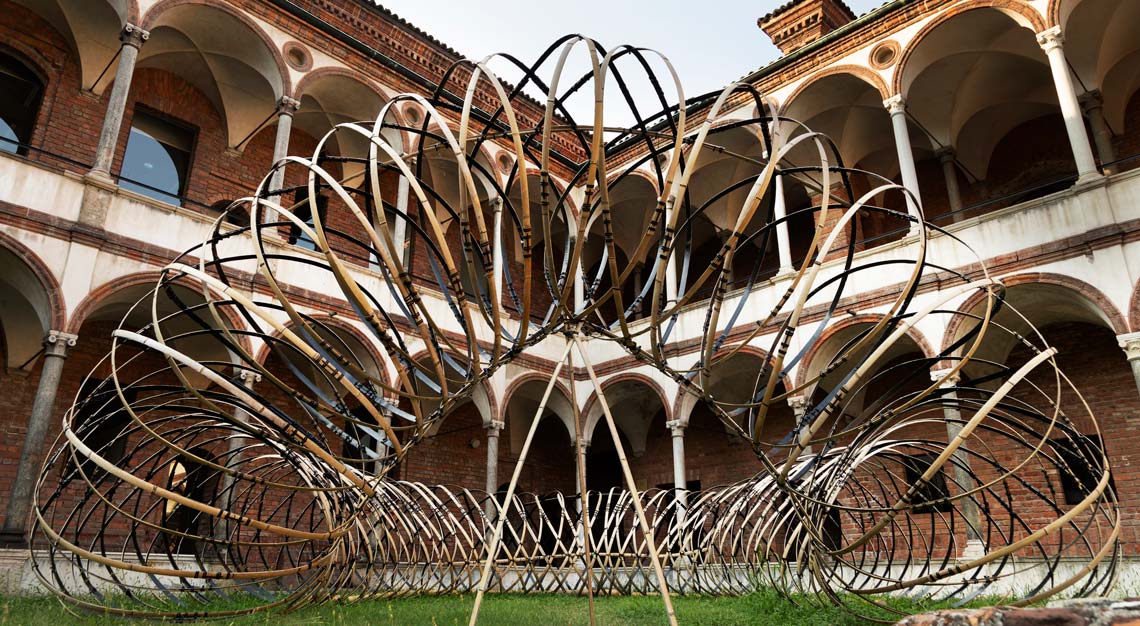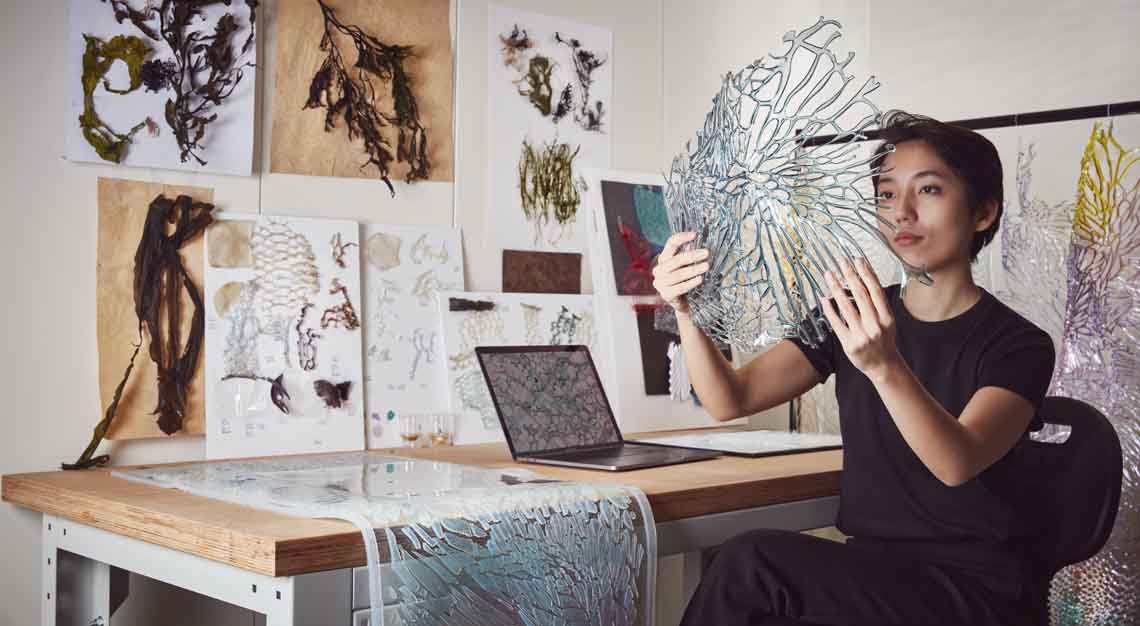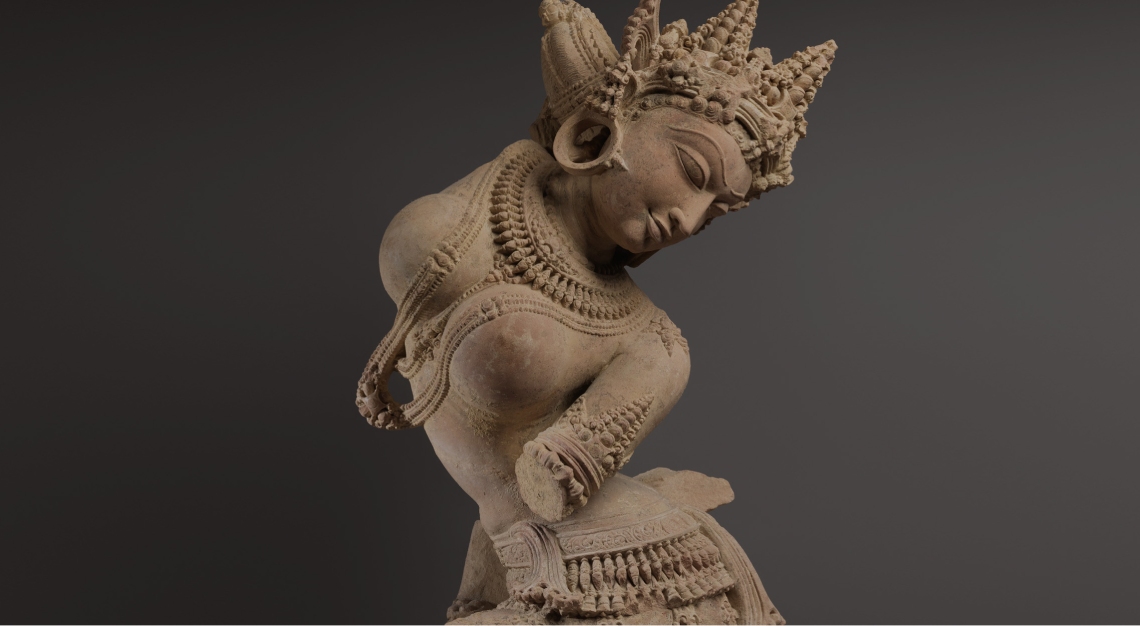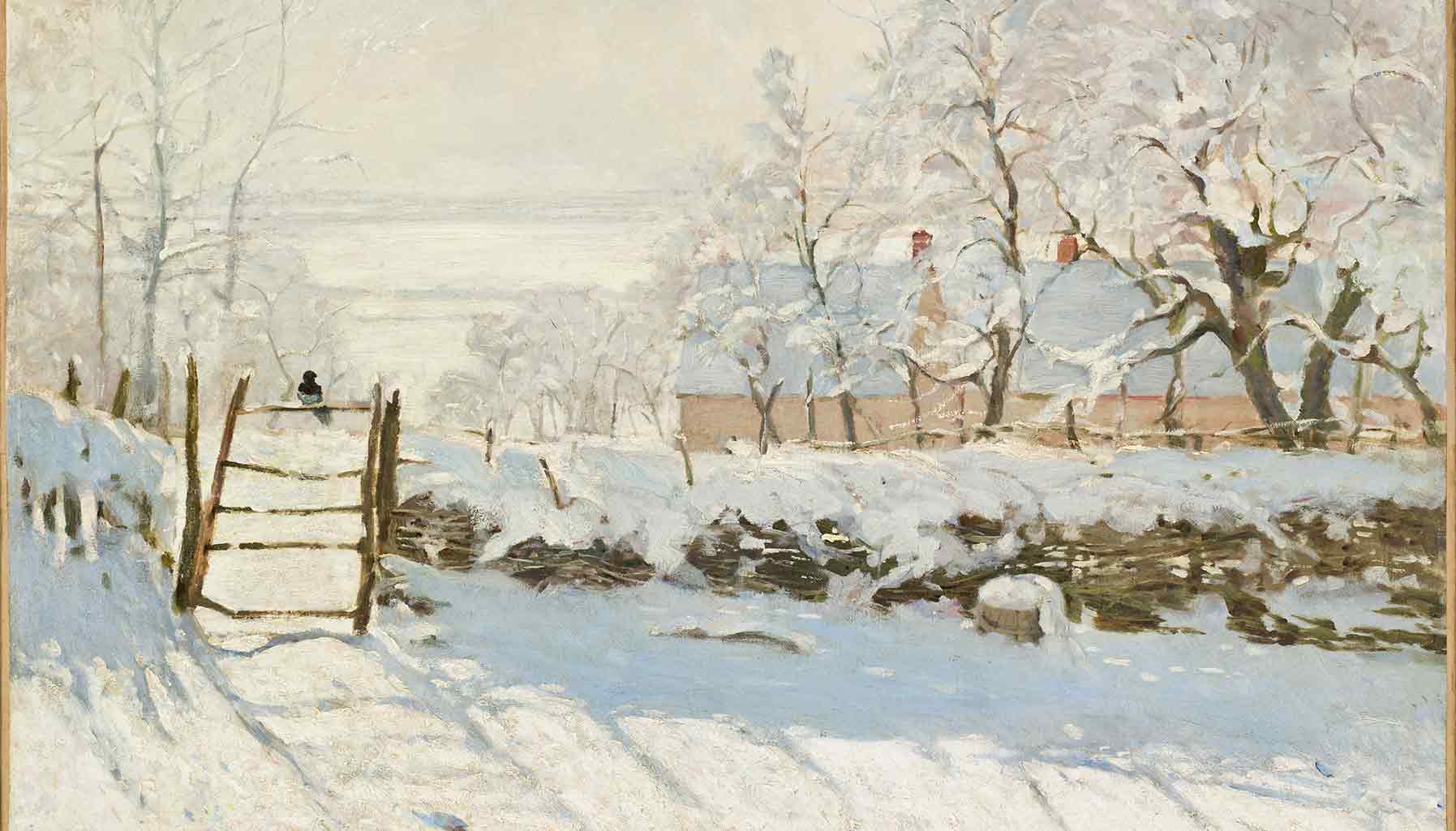In Mind Your Business, we speak with business leaders and thinkers who inspire their respective companies and industries. Here, pop artist Matt Gondek shares his thoughts on his landmark collection, the nature of pop art today, and more
Matt Gondek has a body of work that serves a subversive counterpoint to the truism that art is an embodiment of humankind’s tendency to seek order. In his world, chaos and disorder are the sense-making threads that weave together defiant, thought-provoking narratives.
Then, there is colour. Employing bright, bold Technicolour hues, the Los Angeles artist makes what he calls ‘Deconstructed Pop Art’, wherein beloved cartoon characters such as Mickey Mouse, Bugs Bunny and Bart Simpson are re-presented in boundary-blasting ways across mediums that span painting, sculpture and collectible toys.
What about entertainment and media drew you to them as fodder for art?
When you consider classical artwork in museums, a significant portion of it revolves around themes of royalty and religion. During the times those works were created, the monarchy and the church were daily fixtures in popular culture. However, fast-forward to 2023, and these influences have waned. Instead, we find icons like Mickey Mouse and Bart Simpson taking their place. In a way, these characters can be seen as our modern-day gods. Given my upbringing with a punk mindset focused on anti-conformity, my work aims to deconstruct those in power, which now includes these characters. I call it Deconstructed Pop Art.
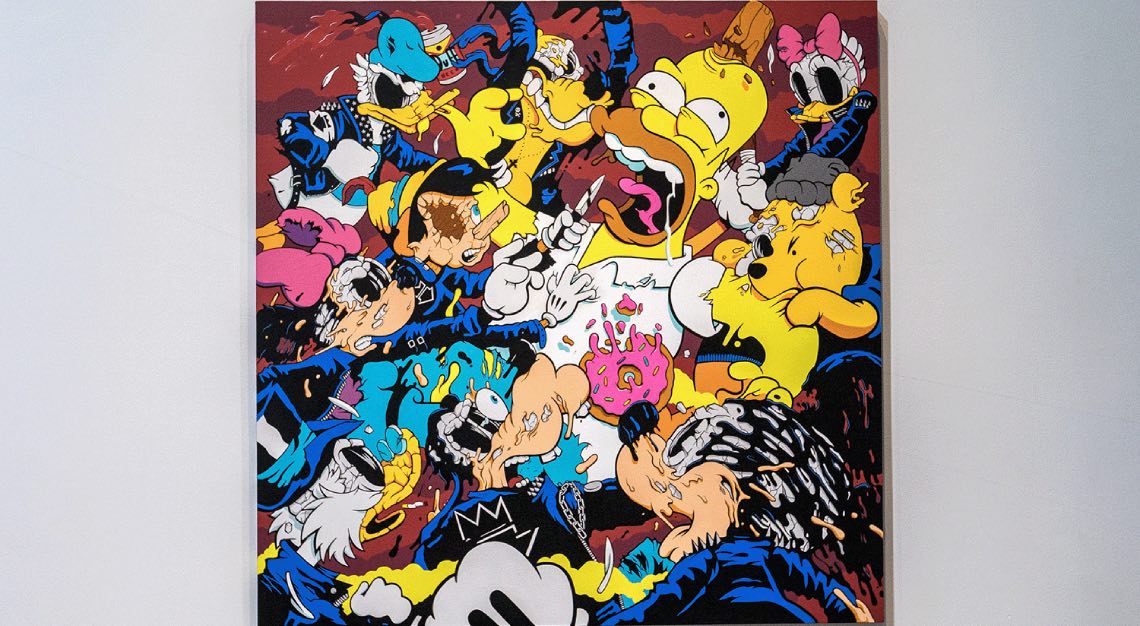
Colour figures very heavily in your world. At what stage of your journey did you realise you could unlock its power in the way that you do?
It wasn’t a realisation or anything; I’ve just always been fond of bright colours. I figured that if something was vibrant, more people would be inclined to look at it.
Let’s talk about your landmark Control exhibition in Los Angeles. What do the works in that curation mean to you?
That was probably my most important exhibition, in terms of scale and where I was as a human being.
Firstly, it was a substantial show featuring around 20 paintings, 20 drawings, sculptures ranging from 12 to eight feet tall; toys, prints and so on. It felt like my “Hey world, here I am” exhibition.
When you’re trying to pursue anything outside the normal career path (artist, musician and athlete), it’s so challenging to get noticed. When people started showing interest in my work and making purchases, I was afraid it would all vanish. I let fear dictate many of my actions and allowed others to make decisions for me. I was also in a marriage that was going very badly.
Control became my line in the sand to take my life back. I severed ties with the people in my life who were causing me harm, stopped letting fear control my art career and, in addition to all of that, I genuinely felt that the artwork I created at the time was the best collection I had ever produced. The control in the linework; the colour selection – everything.
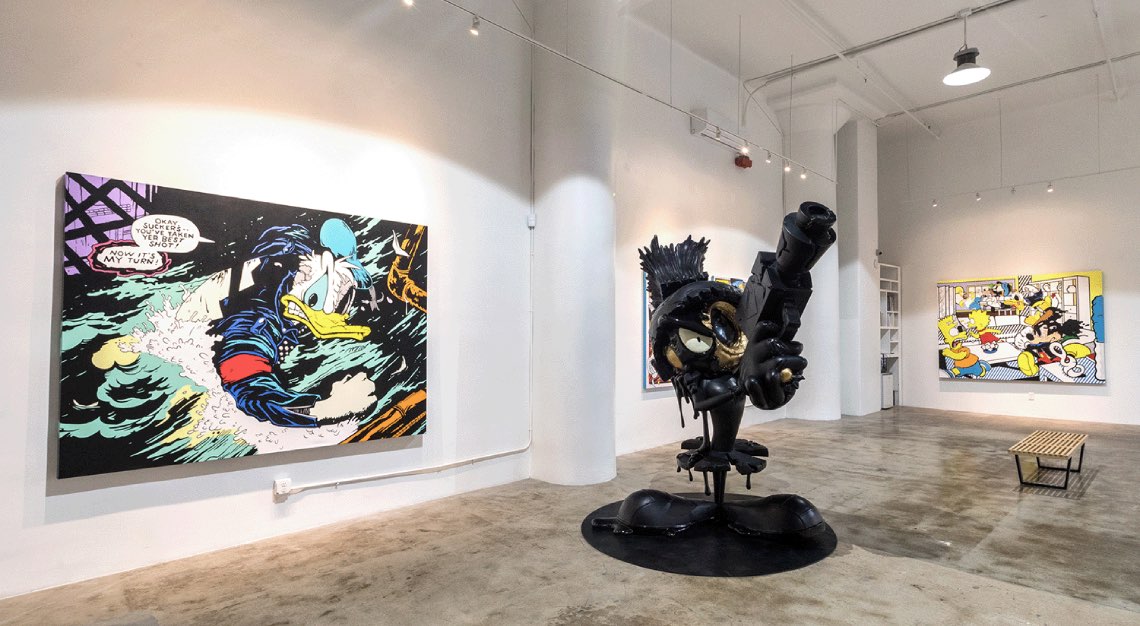
You work across different mediums. Is your approach to each one the same or does it vary depending on what the intended end result is?
It all starts with me just doodling ideas, which are then fleshed out to tighter drawings used as a base for whatever medium. I learned to draw first, so it’s my go-to when I’m coming up with any new concept.
You also helm the Clean Break podcast. What does talking about a vast array of issues and topics with your guests do for you emotionally and creatively?
I just want to help other artists make money and be taken seriously. I think only one per cent of artists make over US$10,000 a year, and just one per cent of that one per cent are actually successful. It’s challenging. By interviewing all these successful creators, I can extract their secrets and advice to share with the listeners in hopes that they can use it to find their own success.
Selfishly, I use the podcast as a form of therapy for myself, swapping stories about art shows, venting about difficult collectors, and learning about new methods and tricks
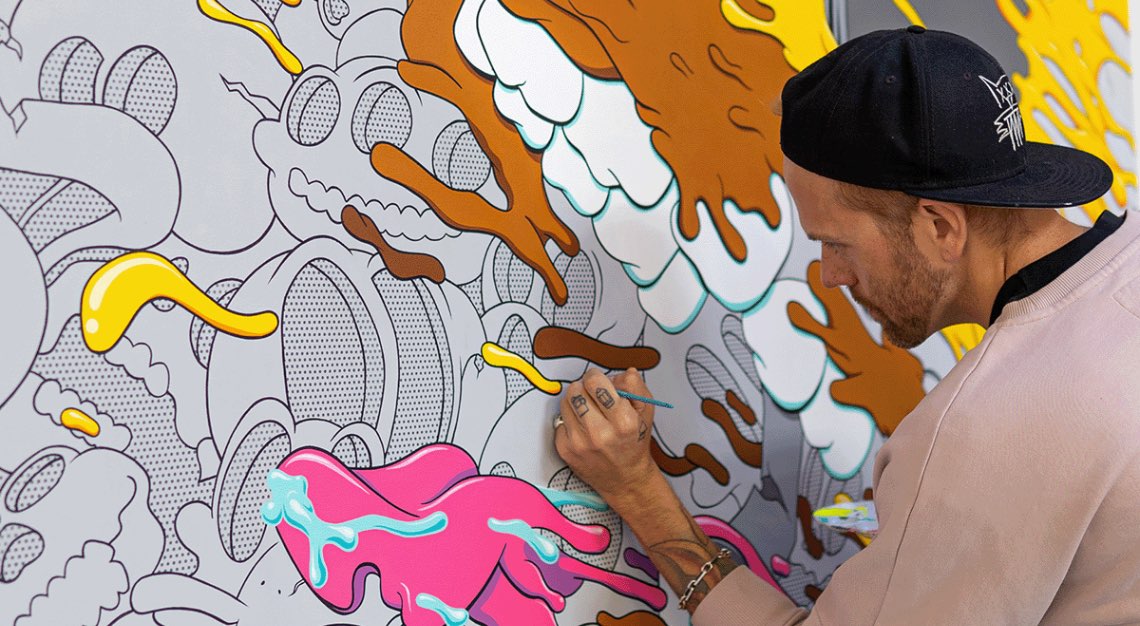
Have there ever been periods where you hit a wall temporarily? How do you deal with a creative dry spell?
I hit walls all the time. It’s clichéd, but I just keep going. I’ve always treated my art practice as a job, working on it from 8am to 5pm, Monday through Friday. When it’s just a part of your life and routine, you’re forced to keep going whether or not you have inspiration that day. Good ideas and bad ideas just come and go constantly – but it helps to always have your eyes and ears open.
At this stage of your career, what does the ‘pop art’ tag mean to you and where do you think pop art is at in 2023?
I started calling myself a deconstructed pop artist years ago. During that time, I’ve seen three thousand artists paint a Scrooge McDuck on a Louis Vuitton bag and call themselves a pop artist. To me, the words have lost their lustre because I think they’re being abused.
Alternatively, maybe that’s the nature of pop art? pop art is right now. It’s current. I’ve been around for a while now. I’m definitely not new. So maybe pop art doesn’t apply to me anymore? Then again, maybe I’ll stick around to destroy pop art.
